In Part 1 of this post, we summarized our route, trip stats, and the wind and weather conditions we experienced. In this part we’ll describe the sailing a bit more, wildlife, and what went wrong (or didn’t) with our boat.
As inevitably happens on a 3 month trip, some equipment breaks or starts acting up – it’s Murphy’s Law of the sea. But while cruising we quickly learned to focus on only the things that actually matter. You get good at prioritizing really quickly. We had to conserve our energy because most of it went towards sailing the boat during the day.
Now back on shore, some of the problems we worry about in day-to-day life seem trivial in comparison. I heard a Clipper racer recently said:
That’s a good way of explaining the difference between shore life and life at sea. While cruising, the challenges are real, and have a direct connection with your safety, health, or comfort. Long-term sailing makes you realize how easy, cushy and soft our lives have become in modern times.
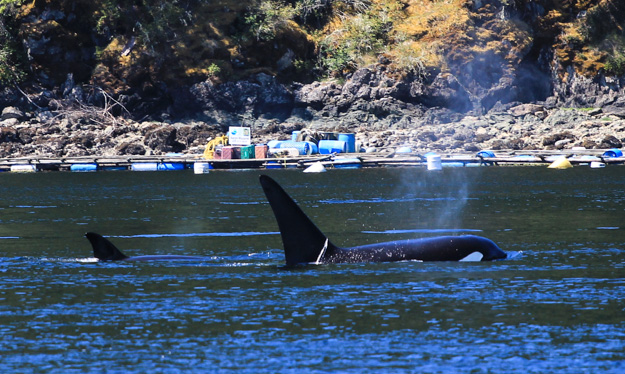
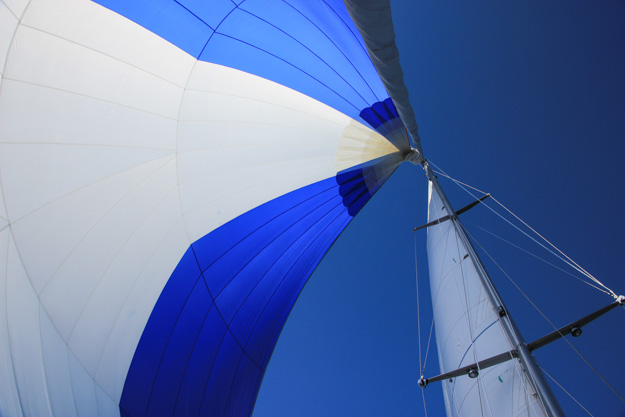
Sailing Tactics
As the wind levels mentioned previously show, if we didn’t sail in 4-10 knot winds, we would’ve done very little sailing. We found our sailing became very tactical this year. It was like a constant chess match with the wind – trying to make sure we left anchor at the right time, were sailing with the wind if possible, didn’t sail ourselves into wind holes, and watched for puffs of better air on the water.
We used the spinnaker, our storm staysail, and nearly every reefing configuration we have for the main and genoa.
But what was more important than which sails we had was having patience and flexibility. The patience to wait for wind, and the flexibility to not sail to a schedule were the two key factors that enabled us to sail more.
We averaged 5 gallons of diesel per week. We have a 16 gallon diesel tank plus up to 10 gallons in jerry cans, so we had enough we could’ve gone a month without filling up in theory – but never risked going below 50%. About 2-3 times per week we sailed onto or off of anchor. It’s not often possible to do that, but when it was we liked to just for fun – it was good practice of a new sailing skill, and gave us confidence we’d still be okay if our engine failed going into an anchorage.
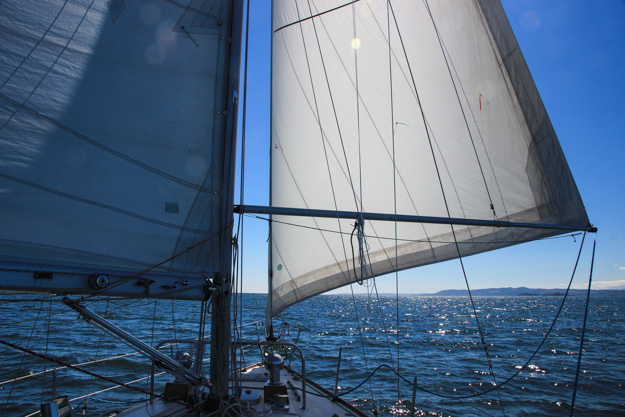
Wildlife
Everywhere we went we saw marine wildlife. We expected we’d see more wildlife in the remote northern areas of BC, but I wouldn’t say that was the case – different wildlife than Puget Sound, but not necessarily more.
We saw about 8 humpback whales, more than the number of Orca whales we saw, which is a reversal of last year when we saw more Orcas. We saw too many eagles, blue herons, and seals to count. We saw only one sea otter, but it’s always awesome seeing them because they’re super cute floating on their back with their paws up.
In the Broughtons we saw 3 black bears, but they weren’t as exciting as I expected; probably would’ve been more exciting if we were on land. In some areas, we had some less desirable wildlife too: mosquitoes, yellow jacket bees, black flies, and fruit flies.
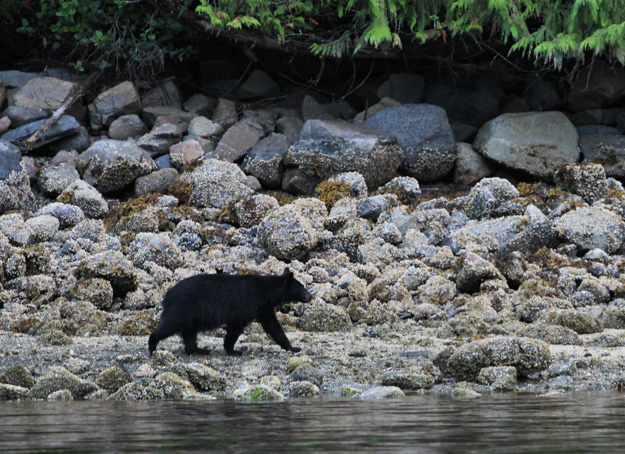
Fishing
We had high hopes of catching salmon in the Broughtons, an area others told us should be like shooting fish in a barrel. We found it wasn’t quite so easy. We fished about 12-15 hours total over about a dozen occasions this summer, and never caught anything except for a 6 inch long sea bass which was too small to keep. We trolled at 1-3 knots and once from the dinghy, in areas noted (in guidebooks or Navionics) for good fishing.
It was difficult to find a lot of time for fishing, because oftentimes we were sailing in depths of 500 to 1000 feet or more. And although we did a lot of sailing at 1-2 knots in 5 knots or so of breeze, eventually the wind would pick up and we’d start moving along at 3-4 knots – too fast for fishing. If we slowed ourselves down for fishing, that meant a longer day getting to the destination – with no guarantee the wind would stay good. In the end, like many others, we realized it’s easier to buy fish than catch it.
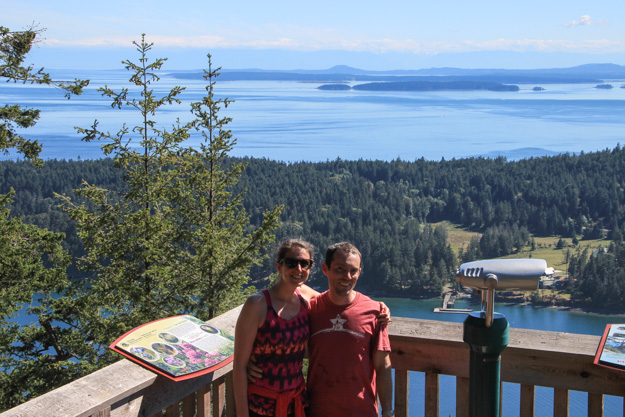
Hiking in the Southern Gulf Islands.
Budget
We lived on a fairly strict budget, since we had no paychecks coming in. We estimated a budget of $2000 per month, and ended up averaging right around there. The first month was over budget because we were stockpiling some dry+canned goods, but the last month came in under budget as we started to eat our way through the stockpiled provisions. One thing we won’t sacrifice is good food and beverages, but those costs added up more than expected. Food and alcohol is expensive in BC even with the improved USD to CDN exchange rate.
We aimed to stay in a marina only once per week – marinas can be one of the biggest expenses otherwise, since it’s about $50-60/night for a 38-foot boat. We prefer to stay in anchorages anyway, so being on land in a marina once a week was just right. We didn’t dine out much – about once per week. Most remote BC anchorages don’t have any restaurants anyway, and many of the ports don’t have very many restaurants either.
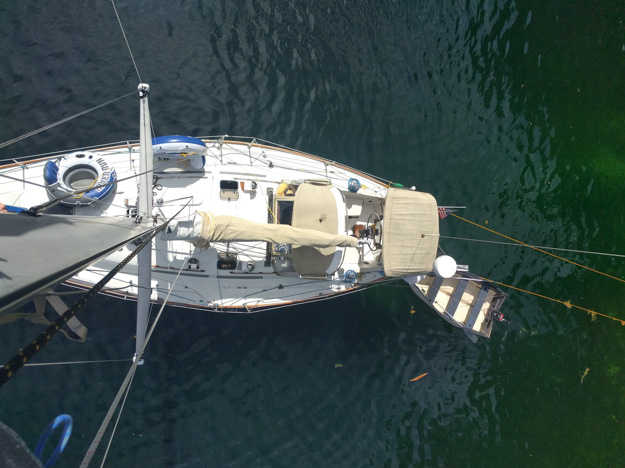
Climbing the mast to do some work while in Pendrell Sound.
Equipment
Our boat performed splendidly on this trip. We had no serious issues like last year, when our engine shut down in the Strait of Juan de Fuca and Neah Bay, or when our transmission was only semi functioning. It was a relief to have no serious problems, because it made the smaller problems – like our house batteries providing only 30-40 Ah of juice – seem trivial in comparison.
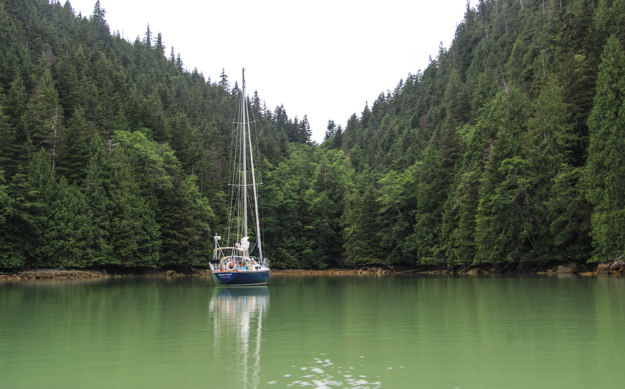
Anchored in our own corner of Turnbull Cove, Broughtons.
As with any long cruise, we had some minor boat issues encountered along the way:
- Electrical Gremlins:
- I realized our battery combiner (a West Marine 50) was broken. It’s supposed to allow charging the starter + house banks simultaneously, and the rest of the time automatically feeds house power from the house bank. It turns out it was broken in a permanently combined state – so we were drawing house power from the starter battery too! Not good. Temporarily fixed by wiring a switch into the combiner circuit so I could manually combine / discombine.
- Our two 100 Ah house batteries were providing maybe 25 Ah of capacity each. With 50 Ah of capacity, we could only use 25-35 Ah before we were at a 25-50% state of charge. We’re happy with a very low electrical budget, as low as 10-20 Ah per day, but 25-35 Ah usable capacity wasn’t enough when we had weeks where we sailed from anchorage to anchorage (giving us less than 30 minutes of alternator charging on some days). And as we sailed south into the warmer waters of Desolation Sound, 1-2 hours of fridge run time was no longer adequate. This problem was partially fixed by buying new batteries in Campbell River, with long-term plans to add solar.
- Voltage drop on the fridge wiring – somehow we’re getting nearly 1 volt of voltage drop on the fridge wiring, which means the fridge compressor could no longer run when our batteries went below about 12.4v, or when it was a hot day out (heat increases voltage drop in the wiring). TODO: replace wiring.
- The wires into our propane solenoid are pretty rusted and pulled out from the wire crimp at one point. Temporarily fixed by re-stripping and reattaching the wire.
- Rough running of the engine. On several occasions we had disturbing changes in sound or slight rpm changes. This was aggravating and difficult to troubleshoot (I replaced the primary filter and secondary filter). After our cruise ended, help from a diesel mechanic at Shilshole revealed it was probably caused by the outlet to the fuel pump being slightly loose, which could allow air to get in the lines – not enough to stop the engine, but enough to cause signs of the beginning of a bigger issue.
- Minor rig issues. Monthly or weekly rig inspections are a good idea! Stuff shakes loose or wears when you’re doing a lot of sailing. I replaced a shackle on the main sheet blocks that had a crack, tightened boom vang bolts that had loosened, and reattached (and Loctite’d) a shackle pin on the genoa tack that had fallen out.
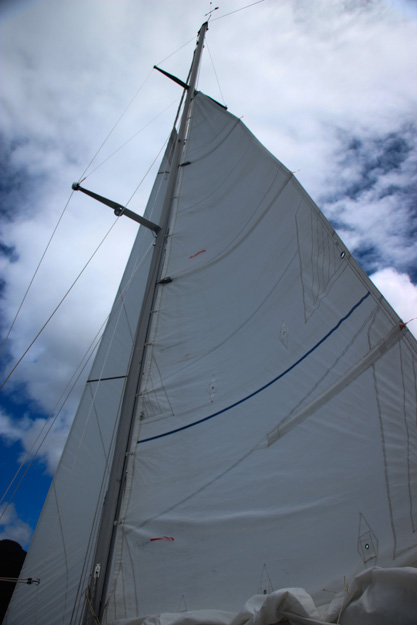
Top Two Most Useful Upgrades We Made
- Masthead wind anemometer (true wind direction and speed). Electronics are expensive, so we try to keep them to a minimum, but the wind anemometer has been super helpful as a learning tool. Even if you know your boat really well, sometimes it can be hard to do the calculations for true versus apparent wind direction at various wind speeds. And judging wind speed just by feel or by wave appearance can be really difficult when the sea state is often affected by current almost as much as it is by wind.
The wind instrument gave us a more reliable way to know when to reef, know whether we’re on a deep broad reach or shallow broad reach (closer to beam reach), and improved our sailing overall. It also let us know when we should sail and when we should keep motoring – sometimes it’s easy to miss the fact that 6-8 knots of wind has picked up behind you when you’re motoring at 6 knots (there’s very little apparent wind).
- Rocna anchor (20kg / 45lb). We were thankful for our Rocna time after time. We never had to worry about dragging (such as at Hope Island anchored in 20-25kts, or when we were in 3 knots of current at Port Neville), and its instant set tendency allowed us to drop anchor with precision in crowded anchorages. This helped us fit into tighter spots than we otherwise would’ve been able to.
Top Two Upgrades We Wish We Had:
- Solar. If you like to sail a lot while cruising, and only stay in a marina once a week, having a charging source other than your alternator is pretty useful. Since some days we only motored 30 minutes (getting in/out of the anchorages), we were perpetually undercharging our batteries – until the weekly marina stay topped them back up.
- Mosquito screens. It might seem surprising that of all the comfort upgrades we could wish for (better ventilation, better heating, more electrical power, etc), mosquito screens were at the top of the list. But when you have dozens of mosquitoes in your boat, buzzing around at night while you try to sleep, and itchy bites in the morning, it’s easy to see how this would’ve been a huge quality of life improvement. We tried to jury rig some screens, but we really need to spend some serious time designing bulletproof mosquito screens, custom fitted to every hatch plus the companionway. If there’s the slightest gap between a screen and the hull / hatch, the heat seeking buggers will find their way in.
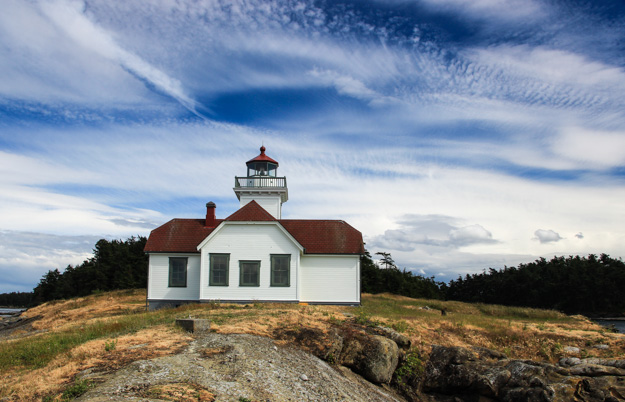
The lighthouse at Patos Island, San Juans.
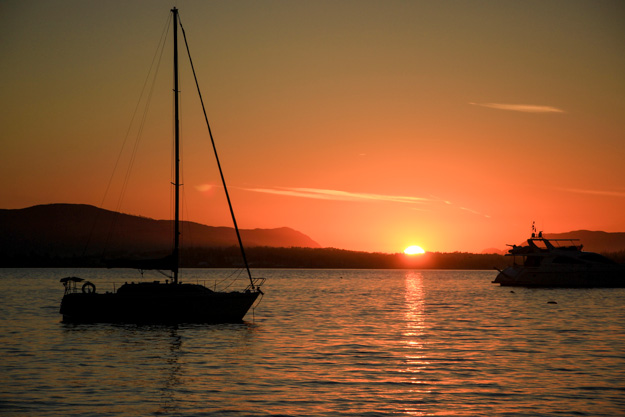
Sunset from Sidney Spit.

What rode setup do you have with your 20kg Rocna and do you have a windlass?
We’ve a 15kg claw with 20m 5/16″ chain and 60m 9/16″ 3 strand for our 34′ C&C with no Windlass. Pulling it up in greater than 20m is a challenge. Thinking of investing in a windlass and new ground tackle…
We have 150′ of 5/16″ chain on it, with a manual Simpson Lawrence windlass. I agree a windlass is helpful, but it sounds like you’re already doing quite well!
We had a 35lb CQR before (about 15kg) and we haven’t found the 20kg Rocna to be much more work. Before we upgraded anchors I used to hand-lift most of the anchor+chain, but the manual windlass is sure nice for when there’s any wind, or if it’s stuck in sticky mud.
Thanks Patrick. I’ll check out the manual windlass option as I’d been only thinking electric. So far so good w/ our setup but I’ve needed to call the admiral away from the helm to help pull up the chain more times than not. Haven’t been in crowded and windy spots upon departure but I worry about both of us being away from the helm in such situations. We do have an auto tiller and I envision that useful in pulling the hook in a windy situation… one more thing to practice.
I just found your blog! I’m in awe how much how managed to sail during your trip – you managed a lot better than I did at avoiding running the engine. Great work!